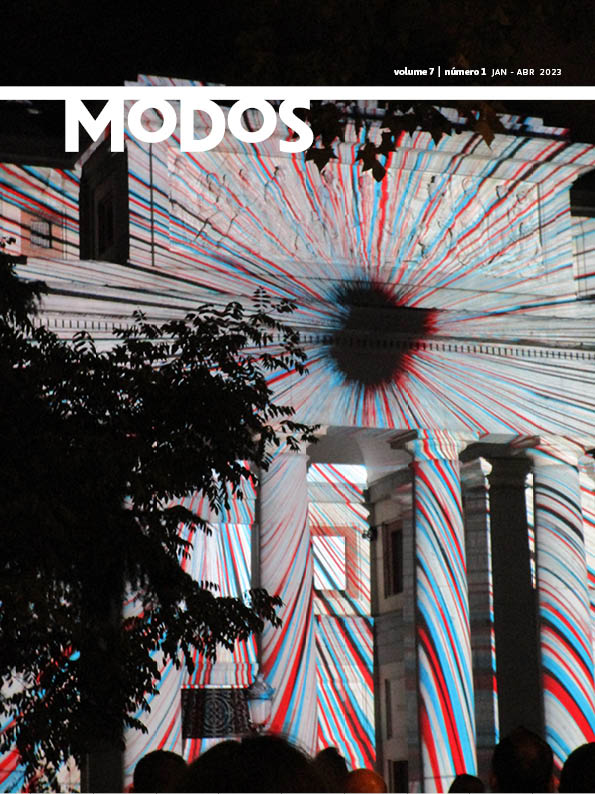Abstract
On September 16th and 17th, 2017, the nomadic online radio station radioee broadcast from Fordlândia, today a district of the city of Aveiro, state of Pará, in the Brazilian Amazonia. Produced by artist Augustina Woodgate along with cultural producers Stephanie Sherman and Hernan Woodgate and several other partners in every new location, Radio Espacio Estacion/radioee was conceived as a multilingual, mobile, online radio station set up around 24-hour/36-hour long events broadcast from different parts of the world to discuss issues of migration, mobility, transportation, environment, and climate change. In Transmissão Fordlândia, radioee revisited the legendary history of the site’s foundation by the Ford Motor Company in 1927. The broadcast questions the official narrative of desertion after Ford’s enterprise failed, which implies ideas of underdevelopment associated with a colonial modern economy of representation of Latin America. Adopting live and online radio communication, based on immediacy, synchronicity, and accessibility, Transmissão Fordlândia combined research, interviews, and first-hand descriptions of the site in a continual multilingual conversation, producing a non-linear narrative enriched with a bustling soundscape of people, birds, water, motorcycles, boats, and everyday activities, transmitted to a global audience. This paper investigates how Transmissão Fordlândia articulates an ecocritical approach to space through site-oriented practices and sonic-spatial imagination, challenging colonial modern representations of tropical landscapes based on spatial rationalization and the duality of culture–nature. This paper also explores the sonic-spatial effects of live radio transmission as an aesthetic device for imagining place.
References
ANTELO, R. La aporia amazónica. In: NOUZEILLES, G. La naturaleza en disputa: retoricas del cuerpo y el paisaje en América Latina. Buenos Aires/Barcelona/México: Paidos, 2002.
BOURG, D.; FRAGNIÈRE, A.(orgs.). La pensée écologique. Une anthologie. Paris: PUF, 2014.
CAPRA, F.; LUISI, P. L. A visão sistêmica da vida: uma visão unificada e suas implicações filosóficas, políticas, sociais e econômicas; Translate by Maya Teruya Eichemberg, Newton Roberval Eichemberg. São Paulo: Cutrix, 2014.
DEMOS, T. J. Decolonizing Nature: Contemporary Art and the Politics of Ecology. Berlin: Sternberg Press, 2016.
DESCOLA, P. Beyond Nature and Culture. Translated by Janet Lloyd. Chicago: The University of Chicago Press, 2013.
ESCOBAR, A. An Ecology of Difference. Focaal, 47, 120-137, 2006.
GAARD, G. C.; ESTOK, S. C.; OPPERMANN, Serpil. International Perspectives in Feminist Ecocriticism. New York: Routledge, 2013.
GASPAR, R. F. “A última aventura" de Romy Pocztaruk: uma viagem entre as utopias e ruínas na Região Amazônica. Revista Poiésis, 22 (38), 64-81, 2021.
GRANDIN, G. Fordlândia: the Rise and Fall of Henry Ford’s Forgotten Jungle City. 1st ed. New York: Metropolitan Books, 2009.
GOMES, C. V. A. Ciclos econômicos do extrativismo na Amazônia na visão dos viajantes naturalistas. Boletim do Museu Paraense Emílio Goeldi. Ciências Humanas, v. 13, n. 1, p. 129-146, jan.-abr. 2018.
HADOT, P. The Veil of Isis: an Essay on the History of the Idea of Nature. Cambridge, Mass: Belknap Press of Harvard University Press, 2006.
HARAWAY, D. J. Staying with the Trouble: Making Kin in the Chthulucene. Durham: Duke University Press, 2016.
KAYE, N. Site-Specific Art: Performance, Place and Documentation. London: Routledge, 2000.
KWON, M. One Place after Another: Site-Specific Art and Locational Identity. Cambridge, Mass: MIT Press, 2002.
LATOUR, B. Reassembling the Social an Introduction to Actor-Network-Theory. Oxford: Oxford University Press, 2005.
LEAL, A. L. Uma sinopse histórica da Amazônia (uma visão política). In: TRINDADE, J. R. B.; MARQUES, G. (orgs.). Revista de Estudos Paraenses (edição especial). Belém: IDESP, 2010.
LEFF, E. La ecología política en América Latina: un campo en construcción. Sociedade e Estado, 18 (01), p. 17-40. 2003.
MACLAREN, I. S. The Imprint of the Picturesque on Nineteenth-Century British Fiction by Alexander M. Ross (review). English Studies in Canada, 14, n. 1, 108-12, 1988.
MIGNOLO, W. D. The darker side of the Renaissance: literacy, territoriality and colonization. Ann Arbor, The University of Michigan Press, 1995.
MIGNOLO, W. D. The Darker Side of Western Modernity. Global Futures, Decolonial Options. Durham: Duke University Press, 2011.
MIGNOLO, W. D. Local Histories/global Designs: Coloniality, Subaltern Knowledges, and Border Thinking. Princeton: Princeton University Press, 2012.
Nature of Rights: Eart Law, Forensics, Geo-Symptoms, series of talks at Nottingham University, Jan. 24, 2015.
NOUZEILLES, G. (org.). La naturaleza en disputa: retoricas del cuerpo y el paisaje en América Latina. Buenos Aires/Barcelona/México: Paidos, 2002.
OUZOUNIAN, G. Stereophonica: Sound and Space in Science, Technology, and the Arts. Cambridge, Massachusetts: The MIT Press, 2020.
QUIJANO, A. Colonialidad y modernidad-racionalidad. In: BONILLA, H. (Org.). Los conquistados: 1942 y la población indígena de las Américas. Ecuador: Libri Mundi, 1992. p. 437-447.
SANTOS, R. História Econômica da Amazônia (1800-1920). São Paulo: Queirós, 1980.
STENGERS, I. The Cosmopolitical Proposal. In: LATOUR, B.; WEIBEL, P. (eds.), Making Things Public: Atmospheres of Democracy. Cambridge, Massachusetts: The MIT Press, 2005. pp. 994-1003.
THOMPSON, K. A. An Eye for the Tropics: Tourism, Photography, and Framing the Caribbean Picturesque. Durham: Duke University Press, 2006.

This work is licensed under a Creative Commons Attribution-NonCommercial-ShareAlike 4.0 International License.
Copyright (c) 2023 Gabriela Paiva de Toledo

